In the garden more than any room in the house, no two years — no two days — are ever the same. Plants grow and die, it rains or doesn’t, and wildlife buzzes around and pollinates plants or deer eat a season’s worth of growth. In addition to the natural forces at play, each year provides an opportunity to refresh what’s going on in the garden or rethink what you want to get out of it.
With the days growing longer and spring edging nearer, it’s a nice time to think about any changes you may want to make — big or small, ecological or just for fun. Winter is far from over in many regions, so while you’re still cozy inside, here are the 15 ideas from the most liked gardening ideabooks of 2014. It was definitely the year of edibles and gardening for wildlife, but then there was greywater and how to get the flower bed just right. Read on to see what got Houzzers excited about gardening last year, and then click the link after each caption for the full story.
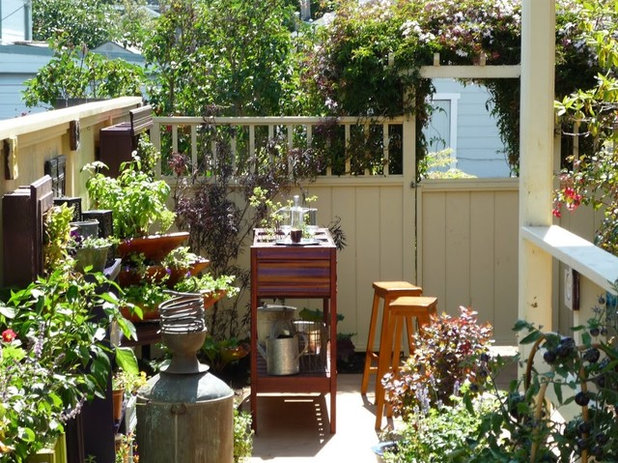
Amy Stewart
1. Grow your own cocktail garden. Some gardeners are eager to grow their own food, but how about an edible garden that produces something to drink? It’s not a completely new idea, but if you’re looking at a different way to create an edible garden, why not try the cocktail garden?
In
The Drunken Botanist,
garden writer Amy Stewart examines how hundreds of plants have found their way into our spirits and liquor for thousands of years. Here is Stewart’s garden in Northern California, complete with outdoor bar.
Read more about how to grow a cocktail garden
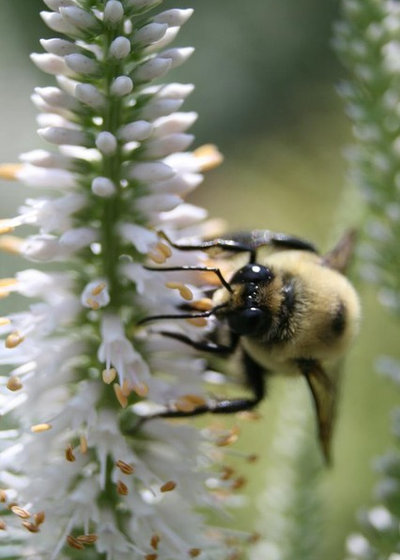
Benjamin Vogt / Monarch Gardens
2. Design a garden for native bees. We know that bees are an important part of our gardens and contributors to the food we eat, but we may not know why that is so. Part of designing a garden to accommodate bees involves learning more about them and eliminating misconceptions we might have. This story explains how our native bee friends live and how we can make room for them in our gardens.
Read more about why it’s important to garden for bees
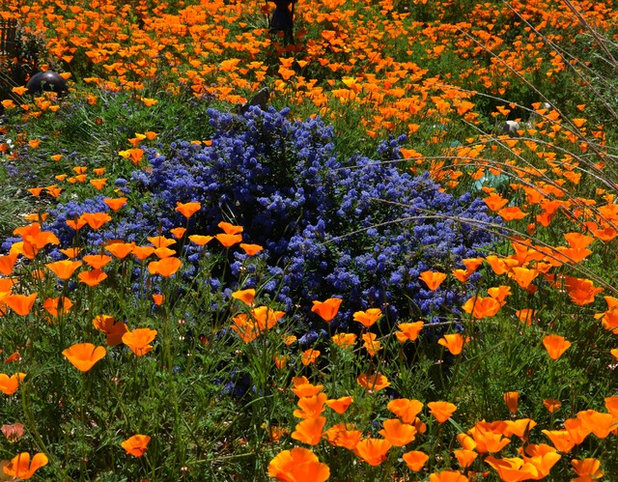
Pete Veilleux, East Bay Wilds
Features of your garden may already be luring native bees, but certain strategies are more likely to get your garden buzzing, from planting in color blocks and incorporating native plants to including other features, like a water source, to support bees.
This field of cup-shaped California poppies (
Eschscholzia californica) and Ceanothus has multiple elements of a bee-friendly garden, plus it looks great.
Learn how to design a garden for native bees
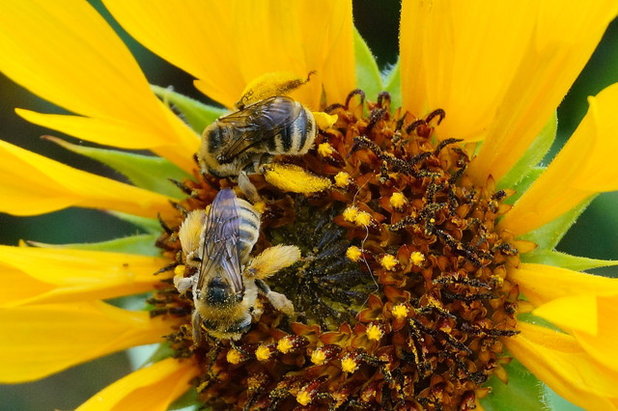
Debbie Ballentine
Part of designing a garden to welcome wildlife involves just sitting down and enjoying your garden’s visitors. While Debbie Ballentine’s story won’t provide you with too many gardening tips and tricks, it’ll remind you that one of the most rewarding parts of gardening is taking a backseat to the birds and bees at work. Let’s take a look at some of these entertaining “bee-haviors.”
Discover some entertaining antics of native bees
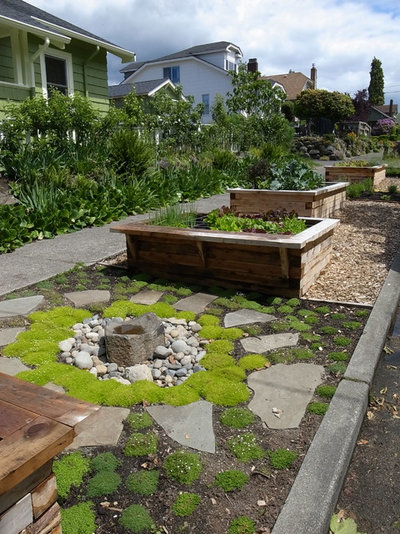
Erin Lau Landscape Design- Seattle
3. Farm your parking strip. This case study in Seattle explores one homeowner’s dream of transforming his once-barren lawn-filled parking strip into an edible oasis. In addition to six raised juniper beds, landscape designer Erin Lau added a birdbath centerpiece and a pollinator bed to attract the bees and bugs to keep the garden thriving.
Your city may not yet allow parking strip farms, but ideas from this story can easily translate to any edible garden or outdoor space in need of a transformation. Who knows? Perhaps this precedent could help sway some city officials.
See how one Seattle homeowner turned his hell strip into an edible heaven
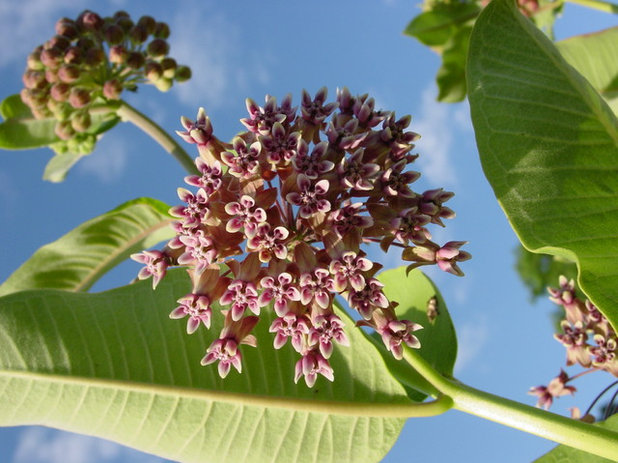
Sparrow Landscaping LLC
4. Garden for the monarchs. Monarch populations have seen record lows in recent years, and efforts on all scales are being made to support them. And with agencies like the Xerces Society for Invertebrate Conservation and the Center for Biological Diversity petitioning for the monarch butterfly to be added to the U.S. Fish and Wildlife Service’s endangered species list, now more than ever might be the time to start gardening for these butterflies, even if that means planting one corner of your garden with milkweed (
Asclepias spp).
Read how you can help these soon-to-be-endangered butterflies
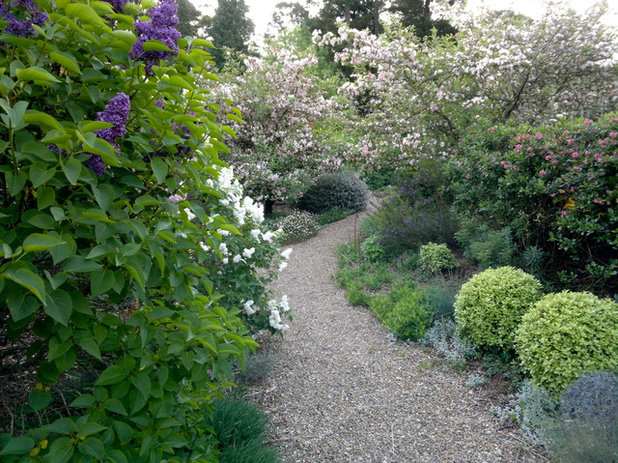
Arthur Lathouris Garden Designer
We’ve talked about the best ways to design the garden for native bees, so here’s how to attract monarch butterflies. From where to plant milkweed to how to leave water out, this ideabook explores how one gardener started to rethink how his garden could be better suited to attract more butterflies — and who doesn’t want that?
See what butterflies taught the author about garden design
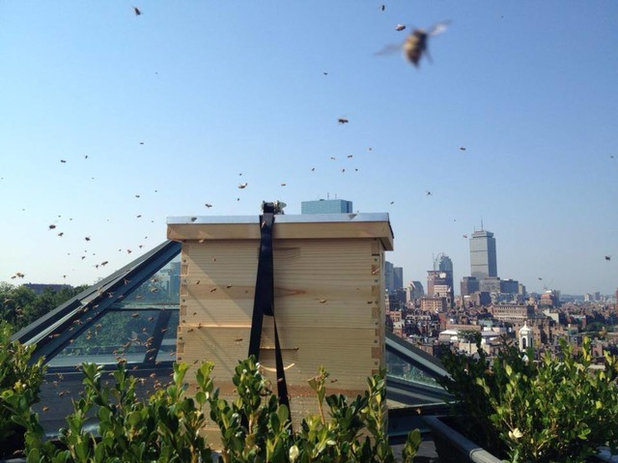
The Best Bees Company
5. Help the honey bees in your city. Let’s not forget about honey bees, another critical component in the pollinating food chain. Support for honey bees can come in the form of plants, but you might also consider adding a hive. In addition to pollinating surrounding plants, honeybees offer beneficial byproducts: beeswax and honey.
Noah Wilson-Rich started the Best Bees Company to bring urban beekeeping to the cities surrounding Boston. Surprisingly, all it takes is a 2- by 3-foot space to accommodate a hive that can host thousands of honeybees. And according to Wilson-Rich’s research, urban bees seem to be doing better, producing more honey and surviving winter better than their rural counterparts.
Learn more about honeybees and their importance
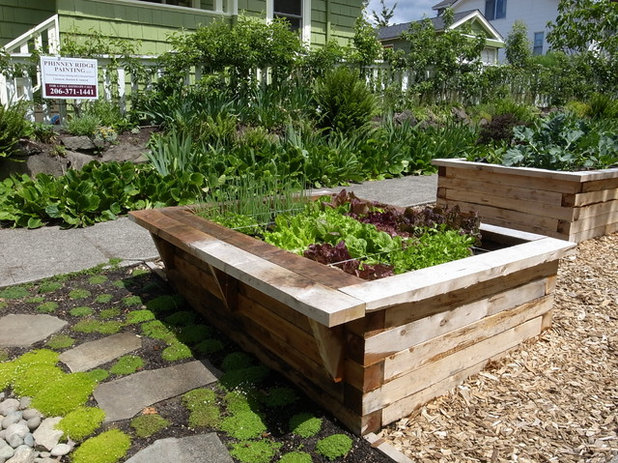
Erin Lau Landscape Design- Seattle
6. Build a raised bed for your veggies and plants. Who doesn’t love raised beds? They make it possible to have near-perfect soil in your yard, they bring plants up to a more comfortable level, and they add structure to the landscape. But raised beds can be expensive and sometimes don’t enhance the garden the way they could.
This solid juniper raised bed by Sam Kraft adds rough-hewn beauty to the garden, and a cantilevered bench gives visitors a great place to sit. The full story even includes drawings and a list of materials so that anyone can have one.
See instructions for some beautiful and sustainably made raised beds
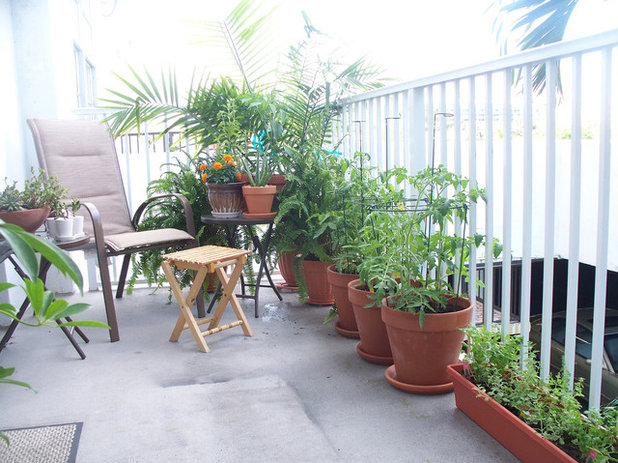 7. Grow edibles in containers.
7. Grow edibles in containers. Many edibles grow well in containers, but some are easier than others. This helpful list advises gardeners not only what to grow but how best to grow it.
Learn how easy it is to grow some edibles
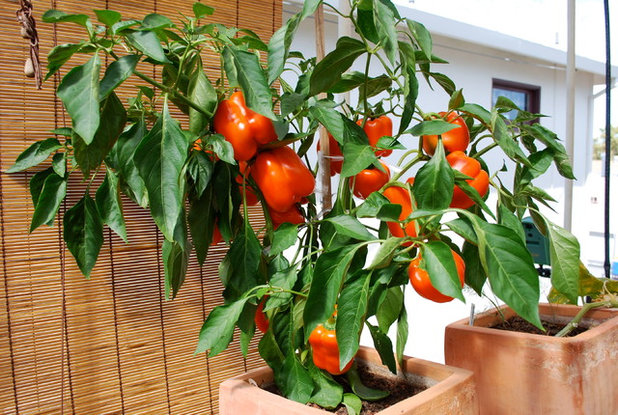
Steve Masley Consulting and Design
This story continues on edibles, this time talking about how to make sure they’ll survive in containers. Yes, containers allow you the freedom to prep the perfect soil, keep your crops close to the kitchen and otherwise create a garden where there might have been gravel, but container gardens can also be a lot of hands-on work. The soil tends to dry out more quickly and can overheat, and containers might simply be too small to give the crop a fighting chance. This ideabook explores some of the most common container garden blunders and what can be done to make sure your time and energy are well spent.
See how to get on your way to your most successful edible crop
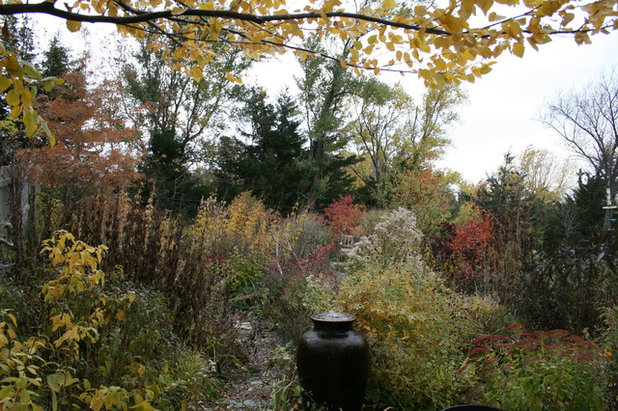
Benjamin Vogt / Monarch Gardens
8. Plant in fall. If you’re not quite ready to revamp the garden, push it back to the end of the year. Fall is rising in popularity as an appreciated season for gardening.
See what you have to look forward to next year
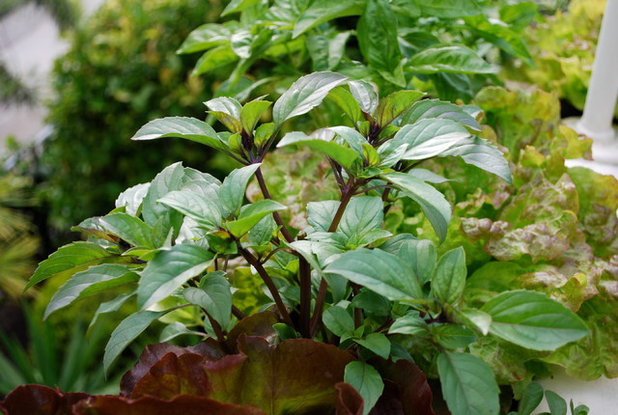
Steve Masley Consulting and Design
9. Grow herbs. Herbs are considered the introductory course in growing edibles, but regardless of the gardener’s experience, garden size or climate, they’re always welcome.
Check out 11 herbs and guides on how to grow them
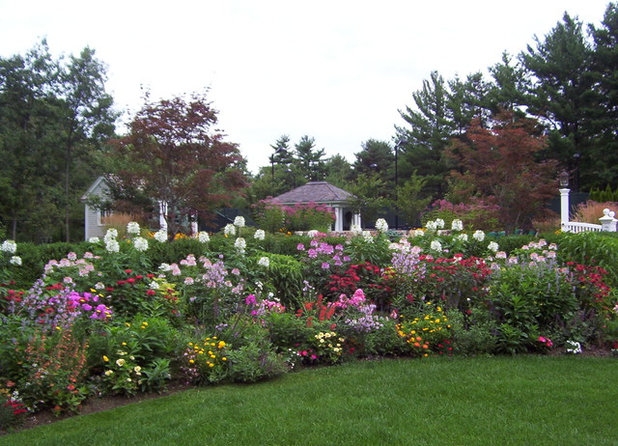
NatureWorks Landscape Services, Inc.
10. Design a colorful flower bed. If this year you really want to turn your yard into a garden, consider the timeless flower bed. The colorful flower bed probably tops the list of most popular garden features, but have you been getting it right? While some gardeners may just start planting on their own or simply hire a landscape designer to take care of it, easy-to-implement tools like repetition, contrast in shape and texture, and a cohesive color scheme will elevate a homeowner’s attempt into something a little more professional looking.
See how to design a colorful flower bed
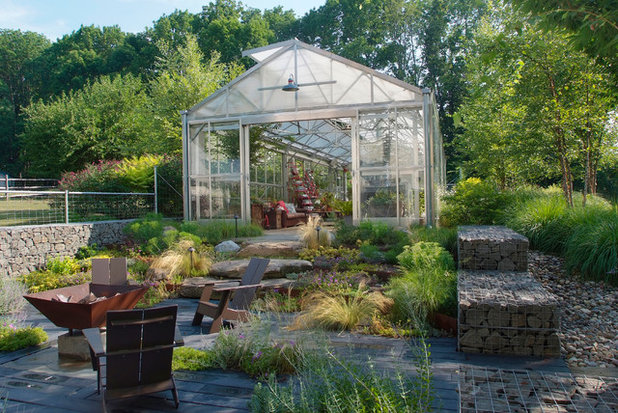
Groundswell Design Group, LLC
11. Find the right native plants for your yard. Enthusiasm for native plants and native gardens continues to grow on Houzz. But after you’ve decided to go native, what next? Where can you learn more about what plants are native to your region, what will thrive in your yard and what plants will be the most beneficial for drawing wildlife? This helpful list, as well as a bevy of user comments, should help get you started on what to grow and where to look.
See how you can find what natives will grow best in your garden
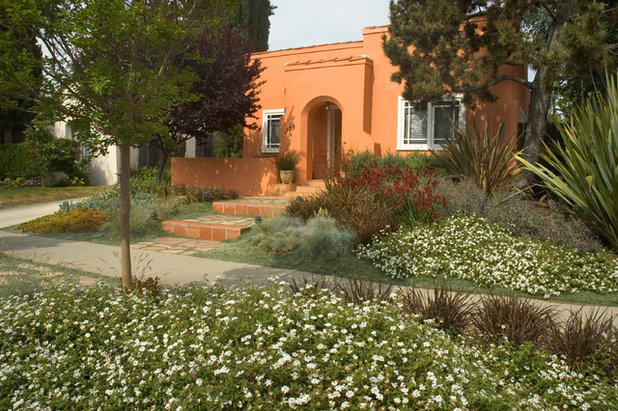
June Scott Design
12. Create a neighborly front yard. Nothing sounds friendlier than a neighborly front yard. The front yard used to be the social hub of outdoor spaces, and some designers and communities are looking to bring that back.
Sitting out front and waving at passersby is one way to make your front yard more neighborly, but simple and attractive moves can make neighbors feel welcome even when you’re not there — from funneling the front path from the sidewalk to the front door to building a little free library.
Explore 8 ways to make a welcoming front yard
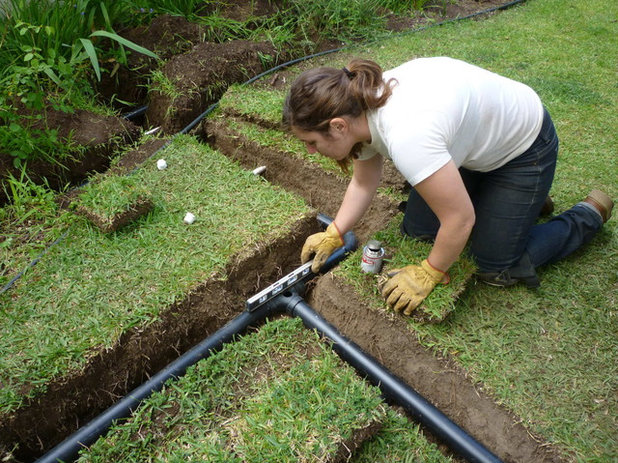
Greywater Corps
13. Grow a garden with greywater. How would you like to cut your monthly watering bill in half by repurposing some of the water you use for laundry, showers and sinks to water your garden? This water, called greywater, can reduce how much you spend on water and can minimize your carbon footprint.
While some greywater systems can get pretty technical, the easiest and most popular method simply involves hooking your washing machine to a tube and distributing the water discharged out into the landscape. How would you like to water the garden every time you wash your clothes?
See how your garden can thrive by going grey
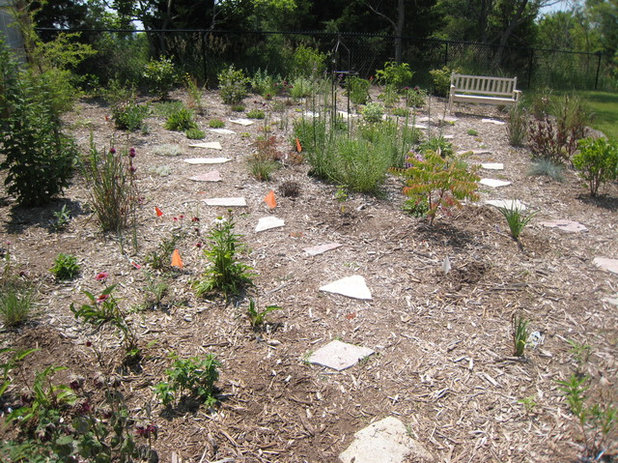
Benjamin Vogt / Monarch Gardens
14. Rethink how you use all that mulch. Gardeners love their mulch, so much so that it has become almost a design element in its own right. Benjamin Vogt has started an interesting discussion about how to use mulch and what its role in a thriving garden is. Take a look for yourself — will you rethink how you use all that mulch?
See how to incorporate mulch into your garden
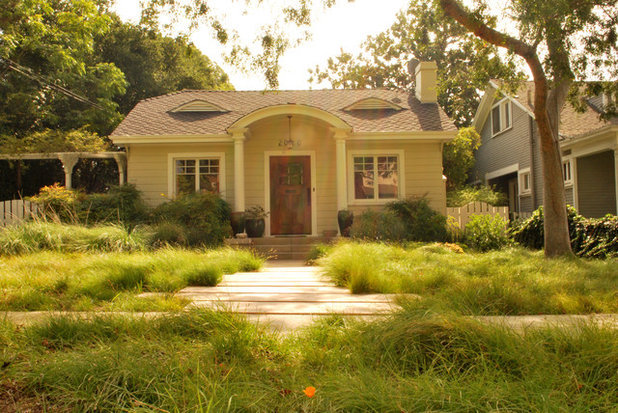
June Scott Design
15. Meet a lawn alternative that works wonders. For a variety of reasons, from saving water to creating more biodiversity, some homeowners and designers are rethinking how much traditional lawn they want. Some are reducing their lawns, while others are eliminating lawns completely, and still others are searching for lawn alternatives.
Sedge (
Carex spp) is one such alternative, a ground cover that’s native to many parts of the U.S. that is a natural, low-maintenance, wildlife-friendly alternative. Meet sedge and see if this year you want to switch over.
See if you’re ready to ditch the traditional lawn for this ground cover
Tell us: How are you looking to try something new in the garden this year?





